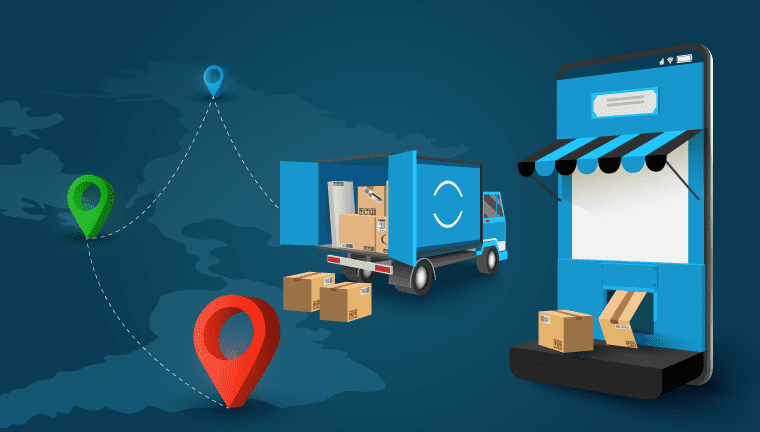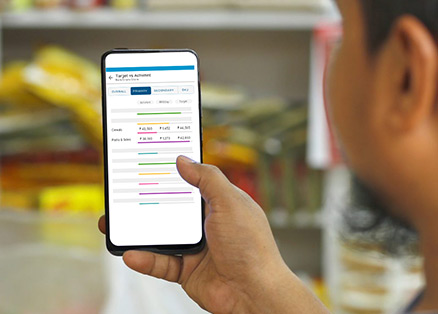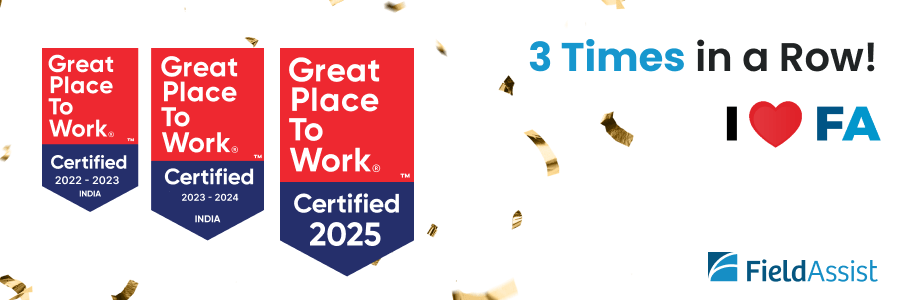This happened with a customer, who was a leading biscuits brand in the 5-15 rupees price points. One day, a distributor salesman, who was also operating the van, loaded the van full of stock and started with his daily visits to the retailers according to the beat assigned to him. In the evening, he was supposed to complete the beat and return with the remaining stock. The distributor kept waiting, and waiting, and waiting, but the DSO never turned up! He had disappeared with the van and the complete inventory in it!
While it’s rare for a sales guy to abscond with the inventory as well as the van, stock pilferage is, unfortunately, more common than we think. And if you consider such events happening over the course of one month across multiple beats across multiple regions, the revenue loss can go into lakhs! Had the company or the distributor adopted a solution that gave them real-time visibility on where the van is at any given time, how many orders has it delivered, payment collected etc, neither the company nor the distribution partner would have suffered a setback like this.
Table of Contents
ToggleSo Why Is Van Sales Still Popular In FMCG?
Van sales are the fastest last-mile delivery solution for a brand to reach its customers, which are the retailers. In smaller cities and rural areas, the ticket size is very low. This means that they cannot afford to order a lot of products in one go and keep a large inventory. Also, certain products, especially perishable or short-shelf-life products, require regular replenishment. For example, FMCG companies that offer bread, muffins, eggs, fruits, namkeens, biscuits, cakes, cigarettes etc.
Considering the vast geographical area they need to cover across their beats, salespeople are unable to visit these outlets more than once or twice a month. In this case, companies use van sales to bridge that gap and ensure that fresh items are within reach of their customers daily.
4 Ways Automated Van Sales boost overall Sales Growth

A recent NCAER survey reveals there are 33 million households in rural India with a monthly income of Rs 1,000 or more. Monthly rural expenditure averages approximately Rs 175 per person on consumer goods, but as much as 25% of them spend Rs 215 and more each month, not far behind the urban per capita average monthly consumer expenditure of approximately Rs 266.
Metros may offer the glamour and glitz of big-ticket sales, but it is the rural areas that bring in the volume. However, widely scattered retailers and the lack of tech infrastructure can make it really difficult to get real-time visibility on rural sales. So companies deploy vans to reach where salesmen can’t.
With an automation solution, van salesmen can easily punch orders, fulfil the order and collect the payment, all in the same visit. Brands can draw analytics, craft a better product assortment and improve drop size based on data from consumption patterns, which products and SKUs are fast-moving, and therefore, require higher production. For e.g. a Rs 5 pack of biscuits might sell very well in small cities and villages as compared to the family pack of biscuits because customers are more price sensitive.

Many times, we hear of FMCG sales leaders getting frustrated with the amount of pilferage that happens when the vans are in the field. This happens because salesmen are able to manually modify the stock loaded or fudge the amount of stock sold over the course of the day. However, with a van sales automation solution, brands can see live updates of stock changes as the sales happen at each counter. As information from the market flows back to the sales team in real-time, the opportunity to pilfer gets almost negated.

Vans require manpower, fuel and maintenance. One of the many ways salespeople wrongfully use the van is to make unauthorised stops, maybe for personal errands or take a different route from the one they are expected to take that day. That takes them longer to complete the beat and unnecessarily inflates their total retailing time in the field, not to mention the additional fuel that gets consumed. Van Sales Automation solutions allow sales team members to define the expected total time and distance to be covered per beat.

Earlier, the distributor had no other option but to take the word of the salesperson that he had visited every outlet in the beat and spent an x number of hours in the field. Now, by automating stock flows of opening stock, closing stock and stock brought forward, the DSO operating the van, as well as his sales manager, both get live visibility of his outlet coverage- how many visited and how many left to be done. This way, the mid manager can ensure adherence to market-visit discipline and protocols by all van salesmen.
Conclusion
With the backing of dedicated apps and sales force automation (SFA) that turn vans into ‘sellers on the move’, the van is a kind of proxy salesman that offers the most convenient last-mile delivery of your products to your customers.
In the Indian context, to increase the frequency of interface with buyers in semi-urban and rural areas, van sales are a boon as they additionally support the traditional retail and intermediaries by giving them the reach typical ways cannot. If you’re also looking to improve your reach with automated van sales workflows, contact us.
About Post Author
Nikhil Aggarwal
Driven by his passion for growth through automation, Nikhil takes pride in embarking his clients through a transformational journey and helps them be a more resilient, agile, and future-ready brand.
















